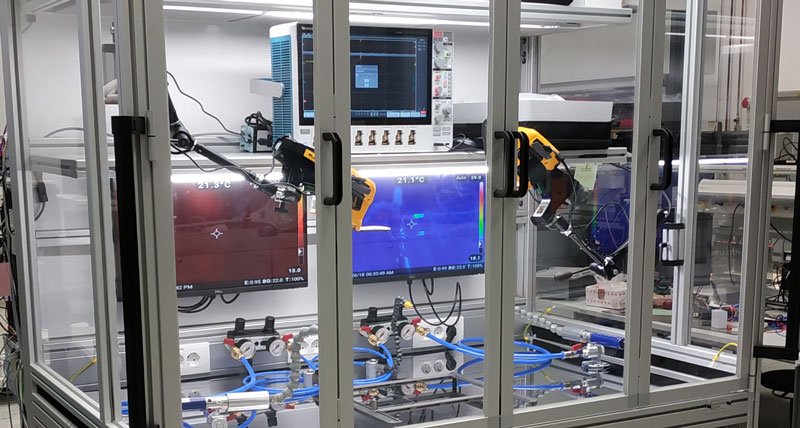Measuring switching losses in wide bandgap semiconductors under realistic conditions and without parasitic effects?
The traditional approach for measuring switching losses like double pulses relies on measuring the current in the semiconductor and the voltage drop at the point of switching. However, the parasitic effect of the measuring equipment itself is enough to skew the measurements.
Several methods have been developed to navigate around this problem and measure switching losses passively under realistic working conditions. They allow an accurate assessment of switching losses at different currents, voltages, and temperatures without requiring any modification to the switch cell itself. It becomes possible to accurately measure even fully integrated modules.
 Fraunhofer Institute for Reliability and Microintegration IZM
Fraunhofer Institute for Reliability and Microintegration IZM